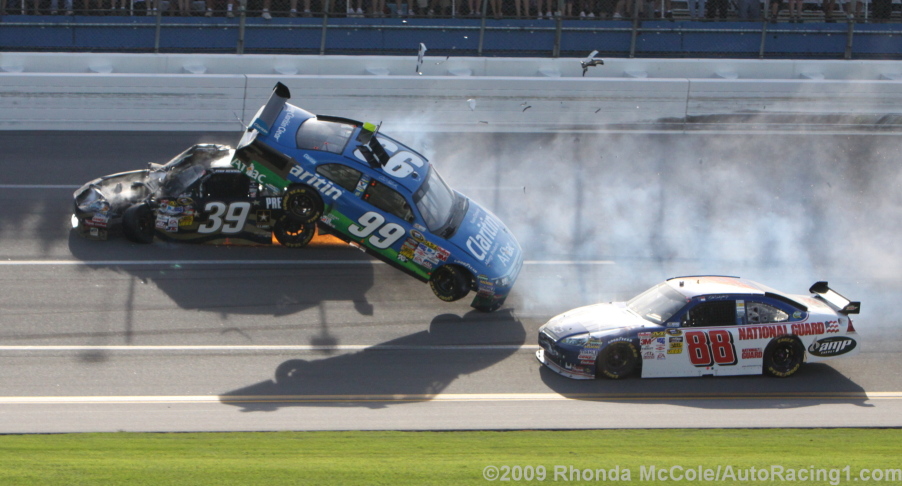NASCAR’s Most Harrowing Moments: A Look at 10 Major Accidents
NASCAR, the epitome of high-octane motorsport entertainment, has witnessed its fair share of dramatic, and sometimes tragic, accidents.
NASCAR is celebrated for its thrilling high-speed races, skilled drivers, and a passionate fanbase that spans the globe.
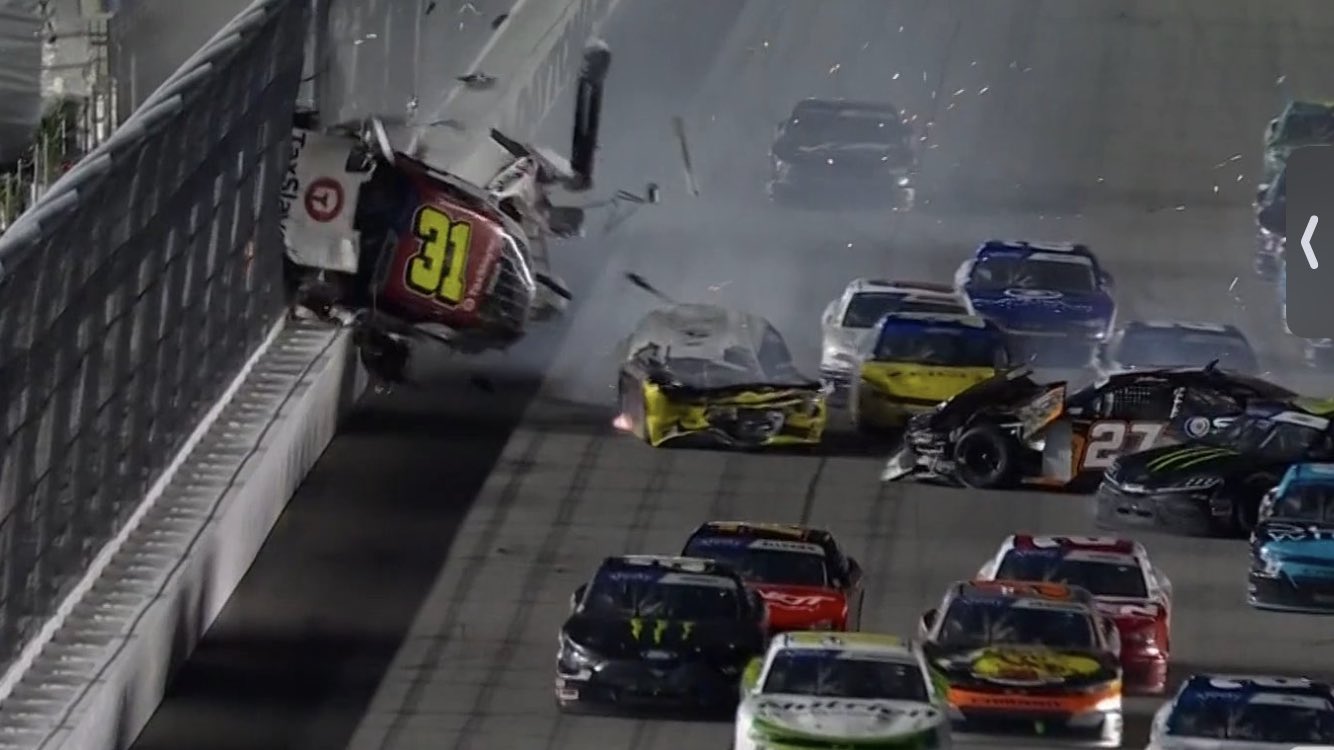
The roar of engines, the adrenaline-fueled battles for supremacy, and the sheer spectacle of racing at speeds upwards of 200 mph have cemented NASCAR as a cornerstone of American sports culture.
However, this exhilarating world is not without its perils. Over the years, NASCAR has witnessed its fair share of spectacular accidents.
These incidents serve as sobering reminders of the risks associated with high-speed racing and the ever-present danger that drivers face each time they take to the track.
Despite the inherent risks, NASCAR has been at the forefront of advancing safety in motorsports. The sport has evolved dramatically in terms of safety protocols and technology, largely driven by the lessons learned from past accidents. Yet, the history of NASCAR is indelibly marked by several severe crashes that have left an indelible impact on the sport and its community.
This article aims to revisit ten of the worst accidents in NASCAR’s storied history. We delve into the details of each crash, exploring not just the circumstances and the immediate aftermath, but also the injuries sustained by the drivers. These accounts highlight the dangers of racing at the edge and the relentless pursuit of safety that characterizes modern NASCAR.
Dale Earnhardt’s Fatal Daytona Crash (2001)
- One of the most infamous accidents in NASCAR history is the crash that claimed the life of legendary driver Dale Earnhardt during the 2001 Daytona 500. On the final lap, Earnhardt’s car made contact with Sterling Marlin’s, sending him head-on into the outside wall at approximately 180 mph. The impact resulted in a broken back, fatal basilar skull fracture, leading to widespread calls for improved safety measures in the sport.
Carl Edwards’ Talladega Flip (2009)
- At the 2009 Aaron’s 499 at Talladega Superspeedway, Carl Edwards’ car went airborne and crashed into the catch fence after making contact with Brad Keselowski’s car. Miraculously, Edwards walked away with no major injuries, but the crash highlighted the dangers of cars going airborne at high speeds and led to further safety enhancements.
-
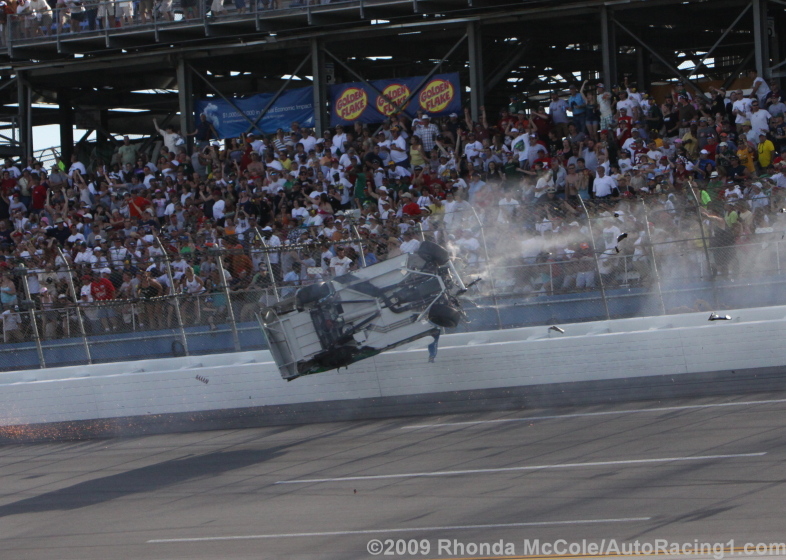
Carl Edwards 2009 Aaron’s 499 Crash
Austin Dillon’s Terrifying Daytona Crash (2015)
- The 2015 Coke Zero 400 at Daytona ended in a frightening scene when Austin Dillon’s car was launched into the catch fence during a last-lap crash. Dillon suffered a bruised tailbone and forearm but miraculously escaped more severe injuries. The crash led to renewed concerns about car safety and track fencing.
-
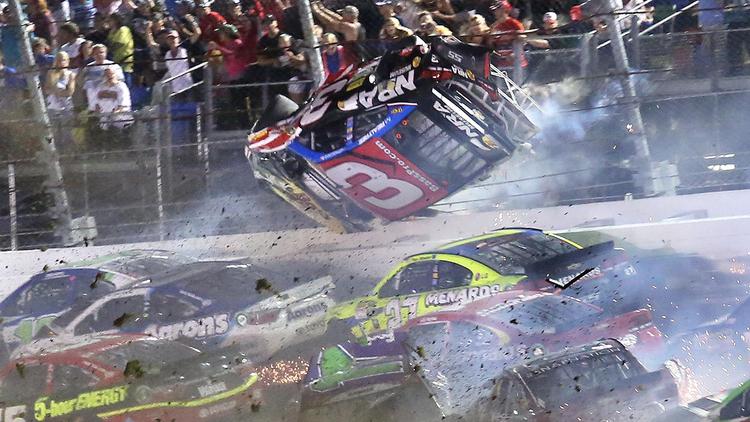
Austin Dillon 2015 Daytona Coke Zero 400
Kyle Larson’s Daytona Nationwide Crash (2013)
- In a chillingly similar incident to Dillon’s, Kyle Larson’s car was sent flying into the catch fence during the final lap of the 2013 Nationwide Series at Daytona. Larson walked away, but several spectators were injured by flying debris. The accident prompted NASCAR to implement new rules regarding car construction and reinforced the need for spectator safety measures.
Steve Park’s Career-Ending Crash (2001)
- Steve Park’s career was tragically cut short due to a severe crash during a race at Darlington Raceway in 2001. His car veered off the track and hit the wall driver’s side first, resulting in a serious brain injury. Park eventually made a partial recovery but never returned to his previous form in NASCAR.
Bobby Allison’s Career-Ending Accident (1988)
- At the 1988 Miller High Life 500 at Pocono Raceway, Bobby Allison’s car hit a tire barrier, causing a severe crash. Allison suffered critical injuries, including a head injury that led to memory loss and forced him to retire from racing. This crash was instrumental in the adoption of restrictor plates to reduce speeds at certain tracks.
Michael McDowell’s Texas Qualifying Crash (2008)
- Michael McDowell’s crash during qualifying at Texas Motor Speedway in 2008 was a testament to NASCAR’s safety advancements. His car flipped multiple times after hitting the SAFER barrier, but McDowell miraculously walked away with only minor bruises, demonstrating the effectiveness of modern safety equipment.
Richard Petty’s Brutal Daytona Crash (1988)
- Richard Petty experienced one of the most violent crashes of his career at the 1988 Daytona 500. His car rolled over multiple times, leaving him with a broken ankle, rib, and wrist. The accident underscored the risks of high-speed racing and the importance of safety gear, which undoubtedly saved Petty from more severe injuries.
Ryan Newman’s Daytona 500 Crash (2020)
- Ryan Newman’s crash at the 2020 Daytona 500 was a heart-stopping moment, with his car flipping and skidding on its roof before being struck by another vehicle. Newman suffered a head injury but miraculously survived and later returned to racing. This crash led to further scrutiny of NASCAR’s safety protocols and car designs.
-
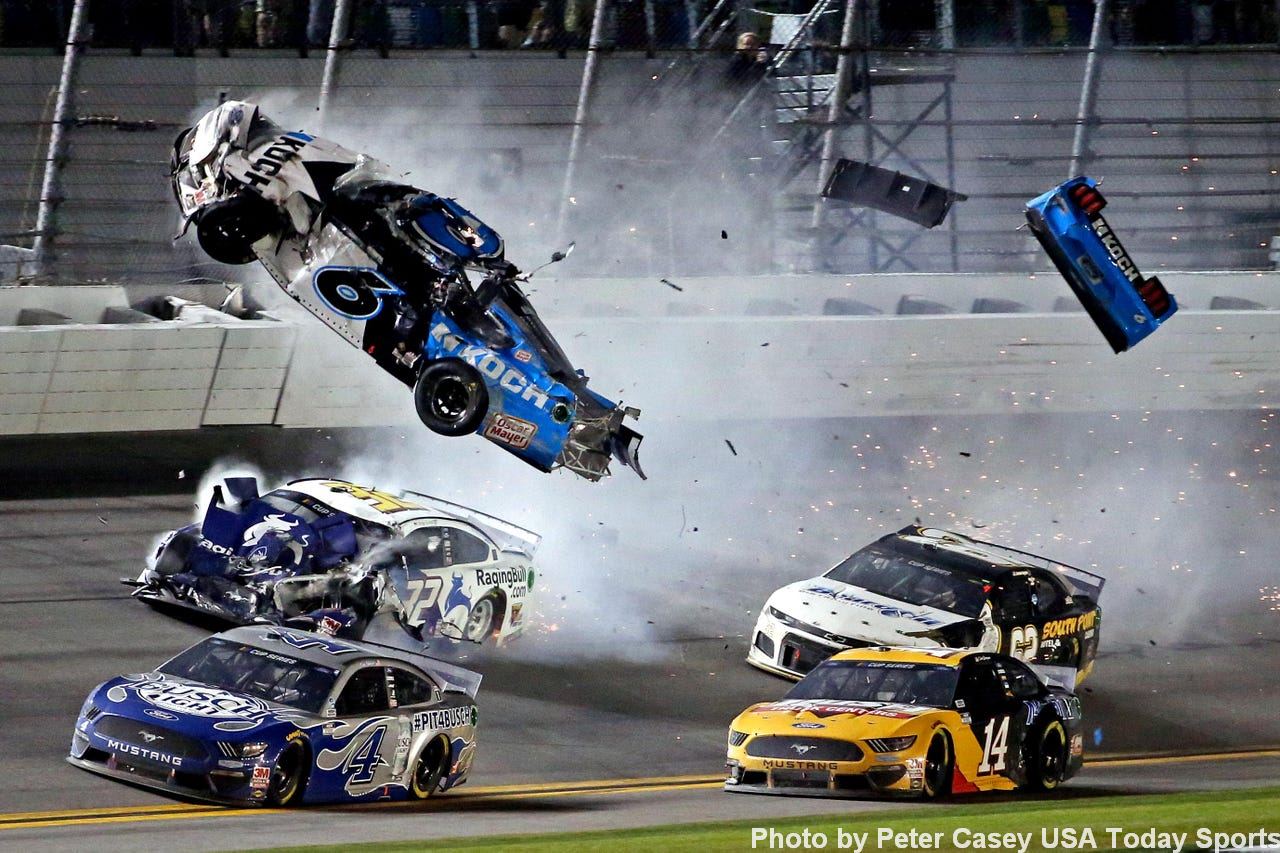
Ryan Newman 2020 Daytona 500
Ernie Irvan’s Michigan Accident (1994)
- Ernie Irvan’s crash during a practice session at Michigan International Speedway in 1994 resulted in life-threatening injuries. He suffered a severe head injury and was in a coma for several days. Irvan’s miraculous recovery and return to racing two years later was an inspiring story, but the accident highlighted the dangers of high-speed solo crashes.
The history of NASCAR is filled with moments of triumph and tragedy, with these ten accidents standing as stark reminders of the sport’s inherent dangers. The injuries sustained by drivers in these crashes range from minor bruises to life-altering conditions and even fatalities.
These incidents have continuously spurred advancements in safety technology and regulations, from improved car designs to stronger barriers and better medical protocols. The courage and resilience of NASCAR drivers, coupled with the sport’s commitment to safety, ensure that the legacy of these accidents is not just one of tragedy, but also of progress and a constant striving for a safer future in motorsports.
